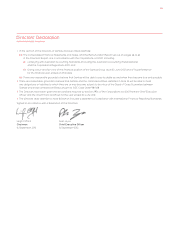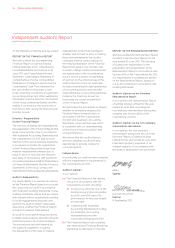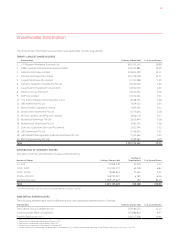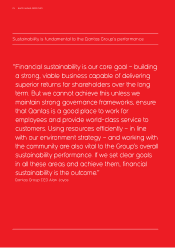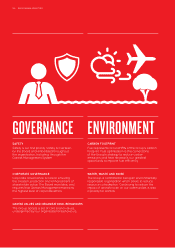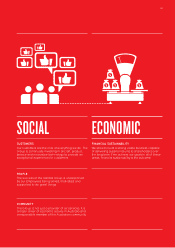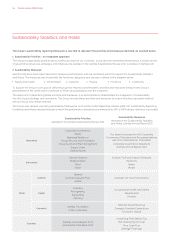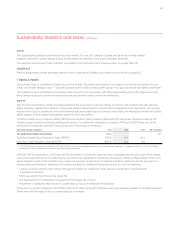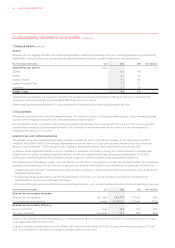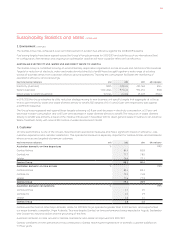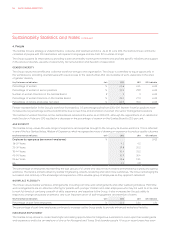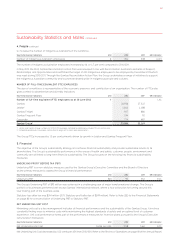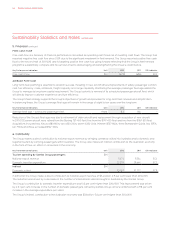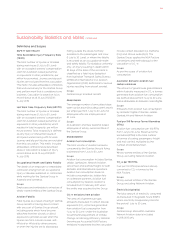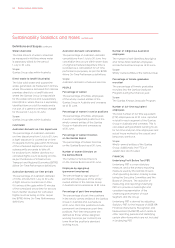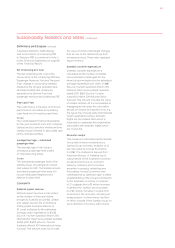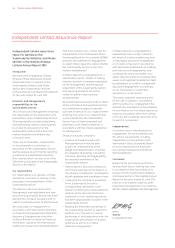Qantas 2012 Annual Report Download - page 145
Download and view the complete annual report
Please find page 145 of the 2012 Qantas annual report below. You can navigate through the pages in the report by either clicking on the pages listed below, or by using the keyword search tool below to find specific information within the annual report.
Sustainability Statistics and Notes continued
SCOPE
The Sustainability Statistics and Notes for the Year ended 30 June 2012 comprise Qantas and its wholly-owned entities
(together referred to as the Qantas Group) except where the definition and scope indicates otherwise.
The definition and scope of each indicator is provided in the Definitions and Scopes section on pages 149 to 151.
ASSURANCE
KPMG’s independent limited assurance report on the Sustainability Statistics and Notes can be found on page 152.
1. Safety & Health
The Qantas Group is committed to Safety as our First Priority. The safety and health of our people is central to the Qantas Group’s
Safety and Health strategic vision - “to be recognised as the world’s leading airline group in air, ground and people safety and health”.
The Qantas Group is committed to providing a safe workplace for our people, with risk-based safety and health programs across
the business in place to prevent workplace injuries and promote safety, health and wellbeing.
SAFETY
The Group is dedicated to continuous improvement in the prevention of injuries, illness, accidents and incidents through effective
safety systems, targeted risk reduction, culture and behavioural programs, and proactive engagement with regulators. The varying
nature of the Group’s operations, work environments and work tasks require business units to tailor the Workplace Health and Safety
(WHS) aspects of their safety management system to their risk profiles.
Total Recordable Injury Frequency Rate (TRIFR) and Lost Work Case Frequency Rate (LWCFR) are the key measures used by the
Qantas Group to monitor workplace safety performance. To reaffirm the importance of safety, TRIFR and LWCFR form part of the
performance measures under the Group’s Executive remuneration framework.
Key Performance Indicators Unit 2012 2011 GRI Indicator
Occupational health and safety Rate LA
Total Recordable Injury Frequency Rate (TRIFR)1TRIFR . .
Lost Work Case Frequency Rate (LWCFR)1LWCFR . .
1 In 2011/2012 Qantas expanded the scope of TRIFR and LWCFR to include all embedded contractors and International employees. Comparative data for 2010/2011 has been
restated to include all embedded contractors and International employees.
2011/2012 TRIFR performance of 35.5 and LWCFR performance of 11.6 were adverse when compared with the prior year. The business
units which experienced an increased injury rate have been identified and business unit specific initiatives implemented. Strain and
sprain injuries in parts of the Qantas Group workforce exposed to high levels of manual handling continue to be the key drivers of
people safety performance. Examples of business unit specific initiatives introduced include, but are not limited to:
— Continuous improvement of the Safety Management System to enable the more effective identification and treatment
of workplace hazards
— Employee stretching and exercise programs
— The replacement or modification of equipment that poses risk of injury
— Placement of additional return to work coordinators to focus on employee rehabilitation
There were no aviation fatalities in 2011/2012 or 2010/2011. Sadly during 2011/2012 there were two employee deaths on Qantas’ premises.
These were not the result of an occupational injury or disease.
143




